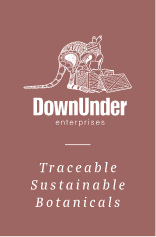Down Under Enterprises grows, produces, exports, and markets traceable
and sustainable native Australian essential oils and botanicals grown on our farm, Buhlambar, and from small growers across Australia producing unique essential oils and botanicals from plants native to Australia.
G’day mate,
-
Bactericidal and virucidal efficacy of ethanol - is 80% enough?
-
Post-harvest Tea Tree activities on the farm
-
New season preparations with our Lillistons
-
Kunzea (Tick Bush) successfully wild harvested in Tasmania
-
Kunzea Oil, a potential replacement for synthetic head lice treatment
-
NEW Applications Page: Identify your next Hero Ingredient
Thanks for reading this month’s newsletter.
Sincerely,

IN THE NEWS
Bactericidal and virucidal efficacy of ethanol - is even 80% enough?
Most governments agree on the public health advice that soap and water is most effective for hand washing - but to use hand sanitizer where soap and water may not be available.
The original advice to consumers was to use an alcohol-based hand sanitizer that contained at least 60% alcohol. This was the advice from the US Food and Drug Administration (FDA) and Centers for Disease Control and Prevention (CDC) and the Therapeutic Goods Administration (TGA) in Australia.
However, some health agencies have now changed to reflect the recommendation of the World Health Organization (WHO) for hand sanitizer formulas to contain 80% ethanol or 75% isopropyl alcohol, as well as inclusion of 0.125% hydrogen peroxide.
We decided to do our own desktop investigations on published research on the efficacy of alcohol and were surprised with what we found. In fact according to a recently published paper by Dr Andreas Sauerbrei, Institute of Medical Microbiology, Jena University Hospital, Jena, Germany, as an antibacterial, 60% alcohol actually doesn’t cut it. His paper suggests a 5+ minute exposure time is needed to achieve efficacy (Sauerbrei, 2020). Interestingly when these data are used to assess alcohol’s antiviral properties, efficacy starts to occur at 60% for some viruses, but full potency is achieved at 80+% concentration. 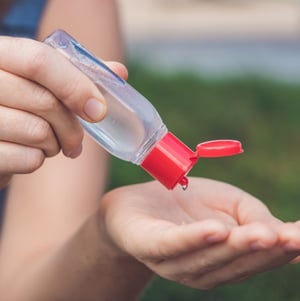
Sauerbrei suggests that a safe bactericidal effect of ethanol can be expected at between concentrations and exposure times of 60% @ ≥ 5.0 minutes, and 85% @ ≤ 0.5 minutes, respectively. Sauerbrei reported that with an exposure time of up to 5 minutes at 80%-90% concentration, ethanol also exerts low level virucidal activity against enveloped viruses, plus adeno-, noro-, and rotaviruses. READ MORE HERE
As a comparison, the natural efficacy of pure Australian Tea Tree Oil against viruses and bacteria has been widely researched and reported in the peer-reviewed clinical literature. From an antiviral perspective, various university research groups have published on the antiviral capabilities of pure Australian Tea Tree Oil against a range of virus types.
For example, pure Tea Tree Oil demonstrates significant virucidal activity on Influenza, H1N1 and Herpes Simplex (HSV) Type I and II, at concentrations of 0.0005%, 0.01%, and 0.001%, respectively (Pyankov, 2012; Li, 2013; Garozzo, 2009). Learn about the mechanism of action HERE.
Of course the antibacterial function of pure Australian Tea Tree Oil is well known and published, with MBC (minimum bactericidal concentrations) as reported by Carson et al. (Journal of Clinical Microbiology Reviews, 2006) at a ≤2% concentration.

FARM UPDATES
.png?width=284&name=Untitled%20design%20(3).png) Pictured here is our farm hand, Jessie! She’s busy at work ‘slashing’ the Tea Tree stumps after the harvest. What many people do not know is that once we’ve harvested the Tea Tree we need to go back over the harvested stumps and cut them down to the ground so that only fresh green shoots come up in the new year – saves a lot of wear and tear on our harvester too! All part of a day’s work at our farm, Bulhambar [pronounced BUH-lum-bar], meaning "Home of Tea Tree" in the native Aboriginal Bundgalung language.
Pictured here is our farm hand, Jessie! She’s busy at work ‘slashing’ the Tea Tree stumps after the harvest. What many people do not know is that once we’ve harvested the Tea Tree we need to go back over the harvested stumps and cut them down to the ground so that only fresh green shoots come up in the new year – saves a lot of wear and tear on our harvester too! All part of a day’s work at our farm, Bulhambar [pronounced BUH-lum-bar], meaning "Home of Tea Tree" in the native Aboriginal Bundgalung language.

TRACEABILITY
Kunzea (aka Tick bush) successfully wild harvested in Tasmania.
Our friends Steve and Ben also happen to be our Kunzea growers. They are successfully wild harvesting the native Australian plant called Kunzea (Kunzea ambigua). Kunzea is a plant that was, until they recently started their essential oil operations, considered a weed by the locals. Steve and Ben have now changed their perceptions completely!
1. How long have you been involved in growing and producing Kunzea Oil?Where are you located?
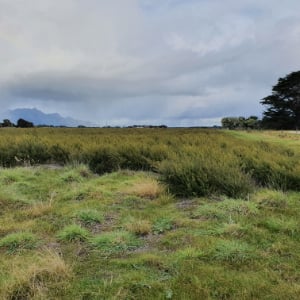
We started here on Flinders Island, just off the coast from Tasmania, 4 years ago and have been wild harvesting on properties throughout the whole Island.
As you may know there are only a few of us distilling this fine oil. We also have built a greenhouse for growing seedlings which we are now planting near the distillery. The Kunzea plant is traditionally a very low yielding plant with an average 5m3 harvest bin giving about 4 to 5 kilos of oil maximum.
2. What sustainability practices do you have in place on your land?
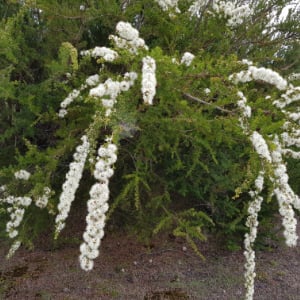
We employ local people to wild harvest the native growth, which can be 45 to 50 kilometers from the distillery. After harvesting the biomass the bins are driven back to the still and then steam distilled. This is providing good, stable employment on an island with little other industry.
As well, our plantation Kunzea plantings are coming along nicely. But it has been a steep learning curve; we are the first ones to ever grow Kunzea on a plantation, and we have had our share of failures to learn from.
We also use a skid steer to harvest in the wild where the brush is too tall for our tractor harvester.
The idea to set up something like our business was a bemusement to the locals when we first started – they really thought we were crazy. Everyone was interested in how to make money out of something they considered a weed. They had been cutting back the plants on a yearly basis for ever. In fact, the other main industry on the island was cattle grazing. But to get the grass needed for agistment, the land had to be treated with superphosphate to stop the Kunea from growing. Now that we've shown landowners that they can receive a return from the native Kunzea, many are no longer applying the superphospate to their land. We think this is a huge win for the environment.
The plant thrives on Flinders Island and is of better quality than the Tasmanian mainland. We presume it is because the soil is low in pH, as well as due to the high winds which we get off the Southen Ocean. These winds often blow salt spray around the island onto the plants, giving them certain minerals. We assume this because of the plants that are harvested near the ocean give a better result in certain compounds than those in the middle of the Island.
3. What kind of products include Kunzea in their formulations today?
.png?width=284&name=Untitled%20design%20(4).png)
Since we started 4 years ago the plant is getting more and more deserved recognition. The uses are similar to Tea Tree Oil but in an essential oil perhaps less harsh. The aromatic value is also pleasing with some people saying it helps them with anxiety. Of course there are the standard known uses like arthritis, painful muscles, and massage oils.
The oil is also really good for human hair lice. It is also now being used for wombat mange, pioneered successfully by a company who have done many trials at the University of Tasmania. They have also found a very good result with the Kunzea hydrosol incorporated into their formulations as a water replacement and efficacy boost.
4. What are some of the traditional therapeutic applications of Kunzea?
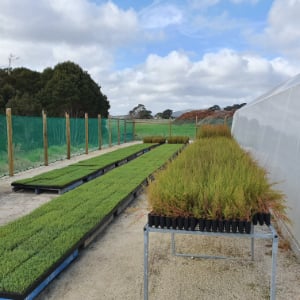
We have lost much of our traditional knowledge in this area. We do know the traditional Aboriginal people in this area used Kunzea for various poultices and salves.
Some of the locals still make a tea out of the green leaves and mix it with a bit of local honey - it's quite a nice taste and is supposed to help with upset stomachs.
Of course Kunzea's traditional name is ‘Tick Bush’ because of the tendency of animals to recuperate from a tick infestation by lying amongst fresh Kunzea bushes. I'm sure this would be of interest to some of your readers.

EMPLOYEE PROFILE
Meet Tony Overmyer, Down Under’s Director of Sales in North America.
This month we caught up with Tony to hear about his years of experience in the industry.
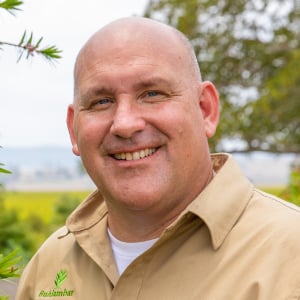
What is your role at Down Under Enterprises? Director of Sales in North America.
What did you do before joining the team at Down Under? I have been in the flavor and fragrance industry for about 12 years.
What led you to want to work in the natural products industry? I was drawn to the flavor and fragrance industry and in particular the essential oil part of the industry due to the fascinating ways to use the oils, whether it be for pure aromatic enjoyment to therapeutic benefits. Incorporating the right oil into customer products is the true thrill of what led me to this industry.
What do you love most about what you do? Seeing our oils in our customers’ products on the shelf or online. Of course being able to visit our farm in Australia and understand how our products are produced is amazing - hopefully flights open up again soon so we can get down to Australia and our farm again.
What’s your favorite way to spend the weekend? Hanging out with friends and family on our lake in Michigan.

SUSTAINABILITY
New Season prep – Our Lillistons
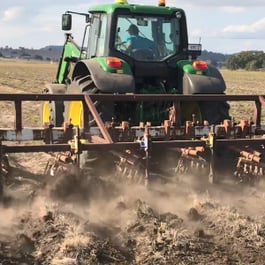
We’re preparing the land for the new season and we’re grateful to have our refurbished Lillistons on site for this process. This is a significant investment in the sustainable farming of the land to support our Cycle of Sustainability. In fact, this tool was made possible by one of our customer's sustainability grants - you know who you are - thank you again.
These ecofriendly cultivators help us to gently cultivate the land, undertake mechanical weeding, incorporate our organic compost fertilizer, and help to reform our rows. The great thing is that the waste biomass from the Tea Tree Oil production process can be made into this compost to prime the land for the new harvest! A prime example of our Cycle of Sustainability.
FEATURED SCIENTIFIC PAPER
Kunzea oil (Kunzea ambigua) potential replacement for synthetic head lice (Pediculus humanus capitis) treatment
Public Health advice for the treatment of Pediculus humanus (headlice) is to use a manual comb removal procedure first, in order to avoid contributing to the growing resistance of lice to synthetic pesticides such as Carbaryl. However, many parents know from first-hand experience this isn’t always the most practical or effective approach with young children.
Researchers from the University of Canberra have reported on Kunzea Oil (KO) offering great potential as an effective alternative to current active ingredients contained within commercial pediculicide formulations. In their research, head lice were exposed to filter paper treated with either KO, at either a 5% or 100% oil concentrations, as well as commercial formulations containing either Permethrin or Tea Tree Oil (TTO) and measured at 30, 60, 90, and 120 minutes.
Notably, adult head lice exposure to KO, at 5% reached 100% mortality within 30 minutes, which was faster acting than either TTO or Permethrin.
The researchers propose that botanical extracts avoid the problems arising from residual effects seen with synthetic pediculicides. KO, and other botanicals are highly unlikely to yield resistance in lice because of multiple modes of action of each of their active principles.


NEW WEBSITE FUNCTIONALITY
Find your next Australian Hero Ingredient
This month we see the launch of our Product Applications section on our website. Here you will be able to search for ingredients according to specific application, function, fragrance and many other parameters to produce a tailored report for your project.
We understand that developing a new formula is never easy. There are so many competing priorities - trends, technology, compatibilities, cost points, certifications, and so many more. We wanted to create an area where R&D Formulation Chemists could produce a bespoke/custom report for their project.
Our new report delivers detailed information on your search criteria, including rationale for the recommendations, scientific references, and clinical papers for each ingredient in your short list.
You will also have access to 1:1 support from our dedicated team to review your report in greater depth.
